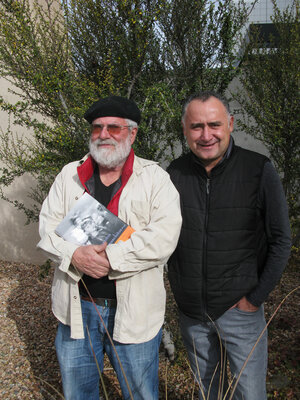Descendants Of Native American Slaves In New Mexico Emerge From Obscurity
–
Every year in late November, the New Mexican village of Abiquiú, about an hour northwest of Santa Fe, celebrates the town saint, Santo Tomás. Townfolk file into the beautiful old adobe Catholic church to pay homage to its namesake.
But this is no ordinary saint’s day. Dancers at the front of the church are dressed in feathers, face paint and ankle bells that honor their forebears — captive Indian slaves called Genízaros.
The dances and chants are Native American, but they don’t take place on a Pueblo Indian reservation. Instead, they’re performed in a Genízaro community, one of several scattered across the starkly beautiful high desert and mountains of northern New Mexico.
After centuries in the shadows, this group of mixed-race New Mexicans — Hispanic and American Indian — is stepping forward to seek recognition.
–
Genízaros are descendants of slaves, but not Africans who crossed the Atlantic in shackles to work in Southern cotton fields. They are living heirs to Native American slaves. In the 18th and 19th centuries, Native American women and children captured in warfare were bought, converted to Catholicism, taught Spanish and held in servitude by New Mexican families. Ultimately, these non-tribal, Hispanicized American Indians assimilated into New Mexican society.
“Who is the Genízaro?” asks Virgil Trujillo, a ranch manager in Abiquiú. “We know who the Apache are, the Comanche, the Lakota. We know all this. Who’s the Genízaro? See, in our history that was suppressed. Spanish people and White people came in. [They said] ‘bad Indian, bad Indian.’ ”
The name Genízaro is the Spanish word for janissary, war captives conscripted into service to fight for the Ottoman Sultan. Some New Mexican Genízaros gained their freedom by serving as soldiers to defend frontier villages like Abiquiú from raids by other Indians. By the late 1700s, Genízaros comprised one-third of the population of New Mexico.
The territory changed hands from España (Spain) to México to, in the mid 19th century, the United States. Genízaros intermarried with Hispanics, and their identity as Native Americans was effectively erased, at least in the historical record.
“Today we have a little tiny opportunity to get our word out,” says Trujillo. “The Genízaro people of the pueblo of Abiquiú are alive and well.”
Native Americans As Slaves, Slave Owners In Michigan
–
The Santo Tomás fiesta moves from the church grounds to the home of the festival chairman. A trio of musicians entertains. People sit at outdoor tables in a chill wind, eating bowls of steaming pozole, or hominy stew, with red chile.
One of the dancers is Gregorio Gonzales, a 28-year-old man in a black skullcap with a red arrow painted on his cheek. If asked, he says, he would say he is a Genízaro.
Today, Genízaro is a neutral term. But it wasn’t always so, Gonzales says. He’s a Ph.D. candidate in anthropology, writing his dissertation on Genízaro identity.
“Genízaro, the term, was actually used as a racial slur by people, especially here in northern New Mexico, the equivalent of the N-word,” he says.
What’s happening in New Mexico today is a sort of Genízaro renaissance.
There have been recent symposia on Genízaro history and identity. A pair of scholars at the University of New Mexico is putting out a book. The working title is Genízaro Nation.
–
“There was a lot of Native American slavery going on. It’s just an eye-opener to the average Americans when they discover this,” says co-editor Enrique Lamadrid. He is a distinguished professor emeritus of Spanish at the University of New Mexico who has done some of the groundbreaking scholarship on Genízaros.
While Native American slavery was commonplace, New Mexico was the only place where free Indians were called Genízaros.
Enrique Lamadrid (left) and Moisés Gonzales, professors at the University of New Mexico, are co-editing the forthcoming book Genízaro Nation. John Burnett/NPR
They were often Comanches, Utes, Kiowas, Apaches and Navajos taken as slaves by each other, and by colonists.
“In the 1770s, if you were going to get married, one of the best wedding presents you could get is a little Indian kid who becomes part of your household. They took on your own last name, and they became part of the family,” says Lamadrid.
One thing the new Genízaro scholarship does is smash the conventional notion that New Mexican identity is somehow defined as either the noble Spaniard or the proud Pueblo Indian.
“The Spanish fantasy is a myth,” says Moisés Gonzales, an architecture professor at UNM and co-editor of Genízaro Nation. “I think it’s great that we’re finally having a very elevated conversation about what it means to be Genízaro in contemporary times.”
In the 300-year-old villages tucked in river valleys of New Mexico, the Genízaros are finally telling their stories.
–















